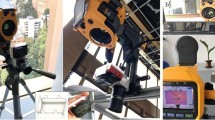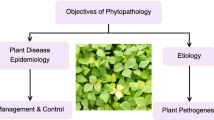Abstract
To distinguish a certain object from mixed images with similar background, this paper proposes an image feature texture extraction method for distinguishing mixed images in similar backgrounds. Taking a mixed image of soybean and weed as an example, the method can accurately and quickly distinguish soybean and weed. In this paper, various fuzzy signals are first studied, the uncertainty classification and its impact are analyzed, a method for fuzzy signal processing is proposed. Secondly, this paper uses function packet to extract the texture features of the target, texture decomposition can obtain more detailed and rich target textures. Finally, using feature matching algorithm to determine the similarity between two feature vectors in an image, soybean recognition is completed, thereby removing weeds from the mixture of soybeans and weeds. Compared with the relevant performance of existing extraction methods, the accuracy of the proposed method is achieved more than 95%. It not only has fast processing speed, but also has adaptation to environment. This research has special practical significance and broad practical application prospects, provides important theoretical references and practical significance for fuzzy feature extraction.










Similar content being viewed by others
Data availability
All data generated or analyzed during this study are included in this published article. We do wish to share our raw data, and these data are original.
References
Biswal B, Dash PK, Panigrahi BK (2009) Non-stationary power signal processing for pattern recognition using HS-transform. Appl Soft Comput 9(1):107–117
Feng-Zhu JI, Shi-Yu S, Chang-Long W, Xian-Zhang Z, Jin W (2011) Applications of fuzzy lifting wavelet packet transform in MFL signal processing. Non-destr Test 33(5):22–25
Liu G, Kreinovich V (2010) Fast convolution and fast fourier transform under interval and fuzzy uncertainty. J Comput Syst Sci 76(1):63–76
Lo JT (2012) A cortex-like learning machine for temporal hierarchical pattern clustering, detection, and recognition. Neurocomputing 78(1):89–103
Wang L, Wang X, Kong L (2012) Automatic authentication and distinction of Epimedium koreanum and Epimedium wushanense with HPLC fingerprint analysis assisted by pattern recognition techniques. Biochem Syst Ecol 40(1):138–145
Xie X, Jitao Wu, Jing M (2013) Fast two-stage segmentation via non-local active contours in multiscale texture feature space. Pattern Recogn Lett 34(11):1230–1239
Suxuan Li, Zelin F, Baojun Y, Hang Li, Fubing L, Yufan G, Shuhua L, Jian T, Qing Y (2022) An intelligent monitoring system of diseases and pests on rice canopy. Front Plant Sci 13(1):972286–972286
Zubkov AV, Antonenko VV (2020) Monitoring of disease and pest infestation of varieties and forms of the genus actinidia. Pomic Small Fruits Culture Rus 60(1):177–185
Zadeh LA (1965) Fuzzy sets. Inf Control 8(1):338–353
Kılıç E, Leblebicioğlu K (2012) From classic observability to a simple fuzzy observability for fuzzy discrete-event systems. Inf Sci 187(15):224–232
Xuebing An, Wei Z, Jian Y (2011) Research on evaluation of banks’ ecological culture based on fuzzy mathematics. Energy Procedia 5:302–306
Wenjie L, Juhui X, Jing Z (2022) Screening trial of extra-membrane weed control technology for maize. Agric Dev Equip 05:142–144
Qinsong X, Summing D, Xinyu X et al (2022) Study on the development status of intelligent field weeding robots. Chin J Agric Chem 43(08):173–181
Jie Y, Chaosong Y, Xiaowei H et al (2022) Development of magnetic navigation fuzzy control system for organic vegetable greenhouse weeding robot. Manuf Autom 44(07):65–68
Shenyan W, Cheng Z, Wenjiang X et al (2023) Design of a new six-row paddy weeder. Agric Mech Res 45(03):52–57
Zhuo Y, Xiushen Li, Hongjuan L (2022) New methods of weed control in wheat fields. Agric Knowl 05:31–32
Jia Honglei Gu, Binglong MZ et al (2022) Optimal design and experiment of spiral corn interplant weed control actuator. Agric Eng Technol 42(12):115
Zhangqian Wu, Qing W (2022) Support vector machine-based leaf image segmentation. Softw Eng 25(06):1–3
Dandan Z, Bin W (2022) A leaf vein segmentation method for soybean leaf images. Comput Syst Appl 31(05):30–39
Wenkui L, Junying H (2022) Research on plant leaf image recognition based on a lightweight convolutional neural network. Softw Eng 25(02):10–13+9
Xiaoliang Z, Jingjun D, Dongyang W et al (2021) Research on leaf image recognition based on SC features. Comput Dig Eng 49(01):163–168
Longlong Li, Dongjian He, Meili W (2021) Research on plant leaf image recognition based on improved LBP algorithm. Comput Eng Appl 57(19):228–234
Yaowen J (2021). Mechanical structure design and control system research of multifunction orchard obstacle avoidance weeding robot [D]. Lanzhou University of Technology, 2020.Computer Measurement & Control 29(5): 1–7.
Lan Tian, Li Duanling, Zhang Zhonghai, et al. Analysis on research status and trend of intelligent agricultural weeding robot.
Miao R, Yang H, Wu J et al (2020) Weed identification of overlapping spinach leaves based on image sub-block and reconstruction. Trans Chin Soc Agric Eng 36(4):178–184
Jun S, Wenjun T, Wu X et al (2019) Real-time recognition of sugar beet and weeds in complex backgrounds using multi-channel depth-wise separable convolution model. Trans Chin Soc Agric Eng 35(12):184–190
Wang Can Wu, Xinhui LZ (2018) Recognition of maize and weed based on multi-scale hierarchical features extracted by convolutional neural network. Trans Chin Soc Agric Eng 34(5):144–151
Jun S, Xiaofei He, Wenjun T et al (2018) Recognition of crop seedling and weed recognition based on dilated convolution and global pooling in CNN. Trans Chin Soc Agric Eng 34(11):159–165
Yongliang Q, Dongjian He, Chuanyuan Z et al (2013) Corn field weeds recognition based on multi-spectral images and SVM. J Agric Mech Res 35(8):30–34
Xiangwu D, Long Qi, Ma Xu et al (2018) Recognition of weeds at seedling stage in paddy fields using multi-feature fusion and deep belief networks. Trans Chin Soc Agric Eng 34(14):165–172
Nagasubramanian G, Sakthivel RK, Patan R, Sankayya M, Daneshmand M, Gandomi AH (2021) Ensemble classification and IoT-based pattern recognition for crop disease monitoring system. IEEE Internet Things J 8(16):12847–12854
Kishan Das Menon H, Mishra D, Deepa D (2021) Automation and integration of growth monitoring in plants (with disease prediction) and crop prediction. Mater Today: Proc 43(P6):3922–3927
Desai L, Singh RP, Khairnar DG (2020) WSN and IoT based monitoring of various macronutrient parameters and disease control of banana crop. Int J Innov Technol Explor Eng 9(5):1290–1296
Shufen W, Lingxiang Y (2018) Feature dimension reduction and category identification of weeds in cotton field based on GA-ANN complex algorithm. J Henan Agric Sci 47(2):148–154
Acknowledgements
This work is supported by the Key Science and Technology Program of Henan Province (222102210084);Key Science and Technology Project of Henan Province University (23A413007); Postgraduate Education Reform and Quality Improvement Project of Henan Province (YJS2023JD67), respectively.
Ethics declarations
Conflict of interest
This manuscript has not been published and is not under consideration for publication elsewhere. We have no conflicts of interest to disclose.
Additional information
Publisher's Note
Springer Nature remains neutral with regard to jurisdictional claims in published maps and institutional affiliations.
Rights and permissions
Springer Nature or its licensor (e.g. a society or other partner) holds exclusive rights to this article under a publishing agreement with the author(s) or other rightsholder(s); author self-archiving of the accepted manuscript version of this article is solely governed by the terms of such publishing agreement and applicable law.
About this article
Cite this article
Zhu, Y., Wang, W., Wu, Q. et al. Study of distinguishable method for mixed images with similar background. Pattern Anal Applic 27, 65 (2024). https://doi.org/10.1007/s10044-024-01282-z
Received:
Accepted:
Published:
DOI: https://doi.org/10.1007/s10044-024-01282-z




